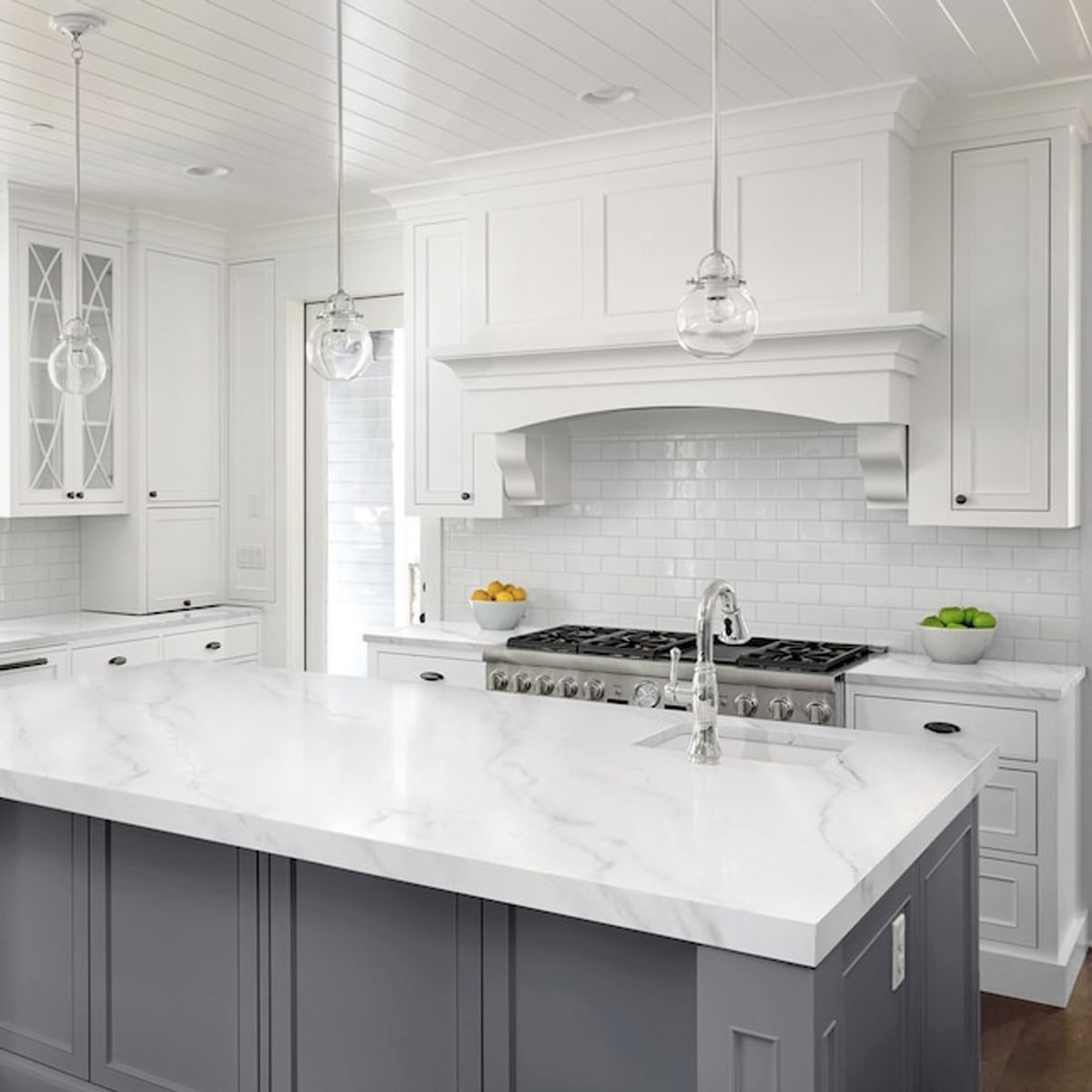
Buying Countertop Paint or Refinishing Kits
Outdated or damaged countertops are an eyesore in an otherwise attractive home, but a total replacement can be prohibitively expensive. Luckily, a fresh coat of specialized paint or a refinishing kit can provide the updated surface you’re looking for at a fraction of the cost.
Knowing this process can be intimidating, Family Handyman editor Mike Berner tried it for himself. We documented the entire countertop refinishing kit project, from prep work to final coat, and it turned out beautifully. Note: Patience is required.
Keep these considerations in mind when choosing the best countertop paint or refinishing kit for you:
Skill level: Although these paints and refinishing kits are meant for DIY use, some require more skill than others. If you’re especially uncomfortable with artistic applications like sponge-painting or scattering colored chips to imitate stonework, consider products that only require paint brushes and rollers. Carefully read the instructions and any relevant user reviews beforehand to ensure you’re not getting in over your head.
Tools required: This varies with each product. If the necessary tools aren’t included in the kit, make sure you own them already or factor the cost into your budget. It can be tempting to use the paint roller or brush you have lying around the house, but if it’s not the correct type or style, you could ruin your project.
Type of countertop: Make sure the kit is compatible with your existing countertop. Most work for a wide range of surfaces, including laminate, medium density fiberboard (MDF) and wood, but always double check.
Coverage: Carefully measure your existing countertop to ensure the paint or refinishing kit will completely cover it. If you’re not careful, you might run out of product in the middle of the project, or waste money buying more than you need. Most kits provide 30 to 40 square feet of coverage. Calculate what you need and buy the right amount.
Color/Finish: Choose a countertop finish or paint that blends well with the look and overall style of the room. Also, think about how you use the countertop and expectations for cleaning or maintenance. Darker countertops hide stains better and look sleek, while lighter options brighten things up. It’s good to choose a neutral color for bathroom countertops, adding color with accessories.
Did you miss our previous article...
https://rsssuperfeeds.com/life-hacks/how-to-grow-an-avocado-tree






